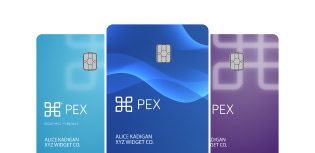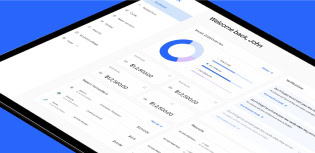Vendor payments made easy: how to save time and money

Manual vendor payments are holding you back in ways you may not even imagine.
There are the obvious problems. Every paper check or fragmented workflow drains staff time, slows projects and increases exposure to fraud. Manual processes stretch payment cycles by weeks and tie up your team in workarounds.
But the costs don’t stop at your balance sheet. Delayed or inconsistent payments frustrate suppliers, weakening trust and eroding goodwill. Vendors stop offering discounts, prioritize other customers and become less flexible.
What looks like business as usual quickly drains your bottom line and strains vendor relationships. The longer your organization relies on manual payments, the more those hidden costs compound.
This post will explore how automation turns vendor payments into a competitive advantage, helping you pay reliably, strengthen partnerships and prevent unnecessary costs. But first, let’s look at how payment delays ripple through your business.
How payment delays impact vendors and your bottom line
Consider what happens on a construction project when payments are late. A supplier delays shipping materials until the invoice clears. Without materials on site, crews can’t start work. In-demand skilled workers move on to other jobs. The project stalls before it even begins.
Or look at professional services. A marketing agency that pays freelancers late risks more than frustration. Freelancers hesitate to take on new assignments, vendors stop prioritizing their campaigns and clients notice when projects slip behind schedule.
For vendors, late payments make your organization look unreliable. Suppliers who once offered discounts may decide to stick with standard pricing. Some may even prioritize other customers who pay faster, or drop you entirely. Contractors and service providers can take their expertise elsewhere, leaving you scrambling to fill critical gaps.
And the fallout doesn’t stop with vendors. Missed deadlines drive up project costs, delay revenue and damage customer trust, multiplying the impact of every late payment.
Why finance teams need real-time visibility into vendor payments
Strong vendor relationships don’t happen by accident. They’re built on reliability and trust. When finance teams lack visibility into payments, that trust erodes for both parties.
Finance leaders operating without real-time visibility are often flying blind. Invoices sit in inboxes or on desks. Checks take days to clear. Payment status updates are scattered across emails and spreadsheets. By the time a delay or budget overrun is discovered, the damage is already done.
For vendors, that same lack of visibility translates into uncertainty. Suppliers don’t know when to expect payment. Contractors can’t plan their schedules with confidence. Service providers hesitate to extend discounts or favorable terms. Inconsistencies chip away at trust, and vendors begin to prioritize customers who pay more reliably.
Real-time visibility flips the dynamic for both sides. Finance leaders can see payment status as it happens, forecast cash flow accurately and make informed decisions in the moment. Vendors gain confidence that payments will arrive on time, enabling them to build stronger partnerships — which translate to better pricing, more flexibility and a smoother flow of goods and services.
Ultimately, visibility isn’t just about monitoring transactions. It’s about creating a system where both finance teams and vendors can operate with confidence, reducing risk while strengthening relationships that directly support the business’s growth.
Moving from risk to resilience: modern best practices for vendor payments
Modernizing the vendor payment process doesn’t have to be overwhelming. By taking a few deliberate steps, finance leaders can reduce risk, build stronger vendor relationships and increase opportunities for growth.
- Eliminate paper checks wherever possible
Checks slow down the payment cycle, create fraud risk and frustrate vendors waiting on funds. Moving to electronic methods like ACH, virtual cards or automated bill pay cuts delays and provides more reliable delivery for vendors.
- Centralize payment processes
Scattered spreadsheets and email approvals create friction points that slow everything down. A centralized system keeps every payment request, approval and status update in one place, so finance teams and vendors alike can track progress clearly.
- Automate approvals and coding
Rules-based workflows (like automated GL coding or pre-set approval paths) reduce manual work and ensure consistency. Finance leaders don’t have to chase exceptions after the fact and vendors get paid faster.
- Use secure payment sources
Paper checks and shared cards leave finance teams exposed to fraud and duplicate charges. Virtual cards and automated payment tools add built-in protections. Each transaction can be limited by vendor, category or amount, reducing risk and giving vendors confidence in accurate payments.
- Integrate with accounting platforms
Disconnected systems leave everyone guessing. Finance leaders don’t know if there’s enough liquidity to cover upcoming obligations, and vendors don’t know when their invoices will be paid. Direct integrations with platforms like NetSuite, QuickBooks or Sage Intacc sync data in real time, giving finance teams visibility and vendors clarity.
By taking these steps, vendor payments transform from a source of risk and frustration to a foundation for stronger partnerships. And the payoff goes beyond smoother operations: automation delivers measurable returns in time savings, cost reduction and growth opportunities.
The ROI of automated vendor payment solutions
When you automate vendor payments, the benefits extend across multiple areas of the business, from lower transaction costs to stronger vendor relationships.
- Time savings for finance teams
Processing a vendor invoice manually costs $12-$25 and takes up to 17 days, while automation cuts processing time down to 3-4 days and reduces cost by 40-60%. That translates into hundreds of hours reclaimed annually.
- Lower transaction costs
Checks cost an average of $2-$4 each when you factor in supplies, postage and staff time. ACH and virtual card payments often cost a fraction of that, and virtual cards can even generate rebates. Instead of incurring check costs, you earn extra cash.
- Fraud risk reduction
Checks remain the most fraud-prone payment method, responsible for 63% of reported payment fraud incidents in 2024. Automation reduces exposure by replacing paper checks and shared cards with secure, trackable digital payments.
- Improved vendor relationships and pricing
73% of procurement professionals say late payments strain vendor relationships, and 59% lose discounts as a result. Paying vendors consistently unlocks early-payment discounts, strengthens supply reliability and builds goodwill that often leads to better terms.
- Stronger cash flow management
Real-time visibility into pending and completed payments helps finance leaders forecast liquidity accurately, avoiding overdrafts, preventing budget overruns and freeing up cash for growth.
How PEX makes vendor payments secure and simple
PEX eliminates the challenges of manual payments by automating data capture and approvals, securing transactions and syncing payments into accounting systems. With these features, finance teams gain visibility and vendors get paid with confidence.
Automation eliminates manual cleanup
Features like mobile receipt submission, pre-mapped GL codes and automated approval workflows save finance teams hours of manual work. And vendors get paid regularly without being held up by administrative delays.
By replacing manual receipt tracking & reporting with PEX’s automation, Texas Tribal Buffalo Project saved 10 hours per week on expense management.
Virtual cards provide built-in protection
Instead of paper checks or shared cards, PEX issues unique virtual cards (physical or digital) that can be limited by vendor, category or dollar amount. For finance teams, that reduces fraud risk and simplifies reconciliation. For vendors, it means secure, dispute-free payments they can count on.
CultureWorks used PEX’s vendor-specific virtual cards to manage recurring subscriptions. They improved spend control and could instantly cancel a card, keeping payments both secure & flexible.
Accounting integrations deliver real-time visibility
PEX connects directly with accounting platforms through pre-built integrations that require minimal setup. For finance, this means real-time visibility into pending and cleared payments, tighter cash flow forecasting and faster close cycles. For vendors, it creates payment certainty: they know when invoices are approved and funds will arrive.
Artisan Capital Group slashed reimbursement cycles by 90% through PEX’s integration with SAP Concur, unlocking $150K in working capital and improving vendor trust through faster payouts.
With PEX, vendor payments shift from being a source of risk and inefficiency to a competitive advantage. Finance teams save hours every week, gain control over cash flow and reduce fraud risk. Vendors get paid on time, strengthening trust and opening the door to better pricing and long-term partnerships.
See how PEX can help you simplify vendor payments, save time and strengthen your vendor partnerships. Book a demo today.
Similar resources
Opinions, advice, services, or other information or content expressed or contributed here by customers, users, or others, are those of the respective author(s) or contributor(s) and do not necessarily state or reflect those of The Bancorp Bank, N.A. (“Bank”). Bank is not responsible for the accuracy of any content provided by author(s) or contributor(s).








